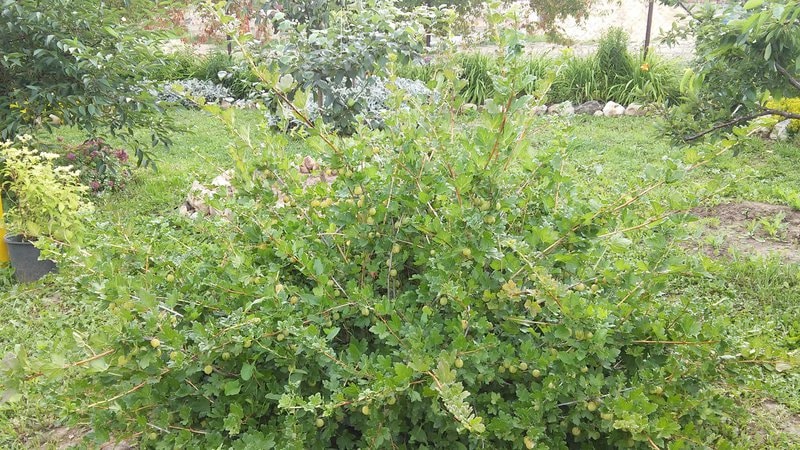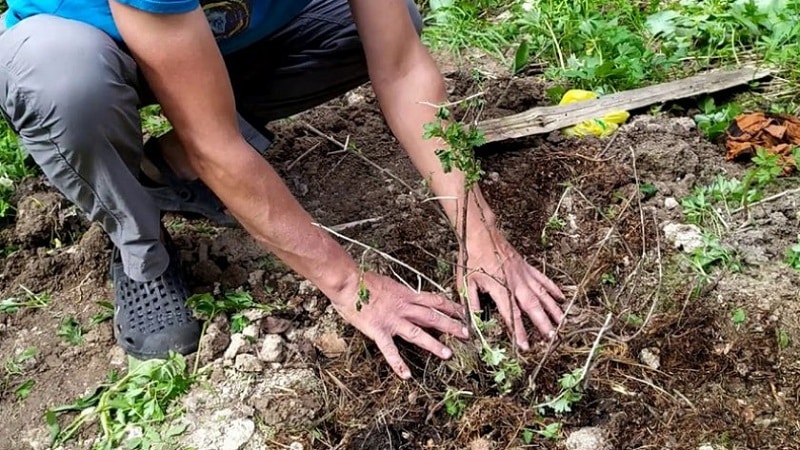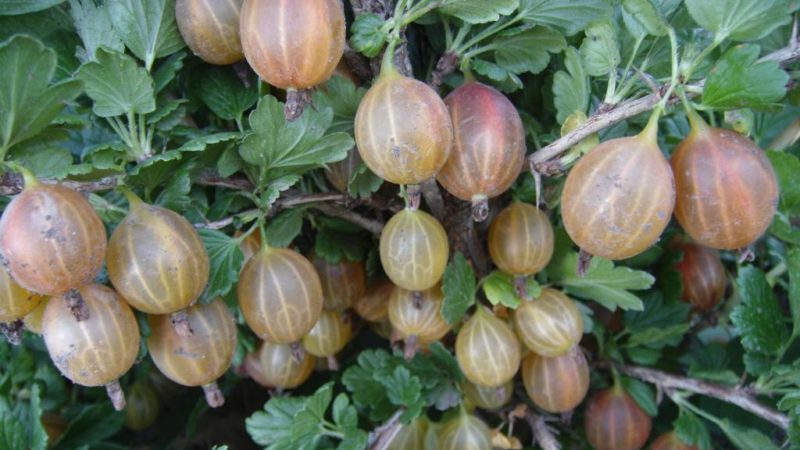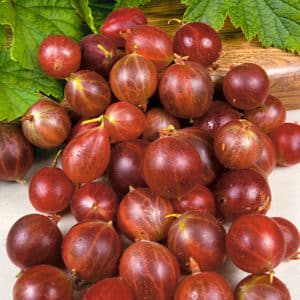High-yielding, cold-resistant gooseberry variety Olavi (Hinnonmaen Punainen)
In the beds of gardening enthusiasts and experienced summer residents there will definitely be gooseberries. This small shrub produces tasty berries rich in nutrients, which are eaten raw and made into compotes, jams and jellies. Finnish frost-resistant gooseberry Olavi is suitable for cultivation even in Siberian conditions, quickly takes root and bears fruit for 20 years.
Description of the gooseberry variety Olavi (Hinnonmaen Punainen)
Another name for Olavi gooseberry is Hinnonmaen Punainen. Due to its resistance to cold, the variety is grown in the climatic conditions of the North-Western region, the Urals and Siberia. The plant is medium late - the fruits ripen by mid-August.

History of origin and distribution
The plant was bred by Finnish breeders and entered into the State Register in 1999. Scientists tried to develop a variety that would be frost-resistant and fruitful.
The shrub turned out to be universal - it easily withstands frost, and the berries have a pleasant taste.
Characteristics of bushes

Olavi's bushes are medium in size with a dense crown. The branches of medium thickness are directed upward and to the sides. Growing green shoots become light gray after lignification. The bush is abundantly strewn with thorns: they are located along the entire length of the shoot, but the bulk is at the base. The buds are small and elongated.
The leaves are medium-sized, green, without down, with a slight shine on the surface, with large teeth along the edges.The leaf is 3–5 lobed with poorly developed basal lobes, large middle lobes and rounded lateral lobes. Attached to the shoot on a light green petiole of medium length with weak fluff, directed obliquely upward.
Widely bell-shaped, pale-colored flowers with oval-shaped sepals are arranged freely and united into small racemes. The ovary is oval without pubescence.
Temperature resistance
The Olavi variety is frost-resistant, the plant is not damaged at temperatures down to -30˚C. Feels good in the heat.
Moisture and drought resistance
In the hot season, the shrub does not require much moisture and does not need additional watering. Can't stand overmoistening. Therefore, where moisture quickly accumulates, it is better not to plant gooseberries.
Resistance to diseases and pests
The bush is immune to diseases (septoria, anthracnose) and harmful insects.
Features of the fruit
The berries are round and medium in size, each weighing 4.4 g. The skin is thin, dense, and has a dark cherry color and lighter veining. The fruits are without pubescence, slightly covered with a waxy coating. The average number of seeds is 26 pcs. for berries. The pulp is juicy with sourness, almost without aroma. Tasting score: 4.5 out of 5 points.
Reference. Olavi fruits taste like white grapes.
Chemical composition of berries:
- dry matter - 11.9–17.0%;
- sugar - 5.9–11.9%;
- titratable acidity - 2.5–3.6%;
- ascorbic acid - 20–39 mg/100 g.
The productivity of the variety is up to 13 kg of berries per bush.
Olavi gooseberries are universal: they are eaten fresh, frozen, and added to jams and compotes.
Advantages and disadvantages of the variety

Olavi differs from other varieties in the following advantages:
- high yield with appropriate care;
- frost resistance;
- rapid survival;
- self-fertility up to 46%, which makes it possible not to use pollinating varieties;
- lack of tendency to fruit shedding;
- immunity to diseases and harmful insects;
- universal purpose of fruits;
- good transportability of the crop;
- Fruiting up to 20 years.
Disadvantages of culture:
- shoots are covered with prickly thorns;
- the fruits often crack in rainy weather.
Growing technology
The characteristics of the place and conditions for planting a shrub determine the success of its cultivation.
Optimal conditions
The plant requires plenty of sunlight and protection from winds. The optimal location is a hill protected by a fence or building wall.
The soil should not have signs of waterlogging and excessive acidity (pH greater than 5.5). Acidic soil is treated with ash or lime. The soil structure varies, from sandy loam to clay.
Landing dates and rules

Planting dates directly depend on climatic conditions: either in autumn or spring.
Before planting, the roots of the plant are soaked for a day in a solution of sodium humate. This will help the shrub quickly take root in a new place.
The planting hole is made 40 cm deep and 50 cm in diameter. To fill the space in the hole, mix half the soil with a bucket of humus, adding 4 tbsp. l. "Nitrofoski" and 1 tbsp. ash. If the site is dominated by heavy loam, sand is added.
Plant plants at right angles. The roots are straightened and the soil is compacted.
Important! The root collar is buried 5-6 cm.
Excess shoots are cut off and 6 viable buds are left. The soil is mulched with peat or humus.
Further care

Gooseberries are watered no more than once every 10 days (during periods of drought, the frequency of watering is increased).Take moderately warm water. Before harvesting, the bush is not watered so that the fruits are not too watery.
For the first 2 years, the crop is not fed - it will have enough nutrients from the planting pit. Next, the plant is fertilized with urea (2 tablespoons per 1 bucket of water) and potassium-phosphorus agents.
Possible problems, diseases, pests

The shrub is rarely affected by septoria and anthracnose. The risk of fungal diseases increases when air humidity exceeds normal levels. In this case, the fruits are covered with a dense gray film. The drug “Topaz” is used for treatment. From plant rust process Bordeaux mixture.
In the fight against aphids the bushes are sprayed with a solution of laundry soap (300 g per 10 liters of water), “Aktellik”. Anthills are removed from the planting site. For spider mites, Metaphos, Phosfamide, and Fitoverm are used.
Wintering
Mature shrubs do not require shelter from frost. In the fall, Olavi is earthed up to preserve the root system. Sawdust or dry peat is additionally placed in the tree trunk circle.
In spring, excess soil is removed, the soil is loosened and fresh mulch is laid out.
Reproduction
Layering is the main method of gooseberry propagation. In May, a shoot is placed in moist soil and sprinkled with loose soil. By autumn, several cuttings will appear in this place, which will be ready for transplanting.
Variety reproduce and cuttings. In summer, green shoots 15 cm long are cut and placed under film. To stimulate the formation of the root system, the soil is watered abundantly.
Features of cultivation depending on the region
The planting period of Olavi depends on the climatic zones.In the northern regions this is done in the spring, before the buds open and after the soil warms up, in the southern regions - in the fall, mainly in October.
Pollinator varieties
Since Olavi is a self-fertile variety, it does not require planting an additional pollinator. In rare cases, to increase productivity, Lefora Seedling is planted nearby.
Conclusion
Olavi gooseberry does not require special care or special agrotechnical techniques. It is resistant to common diseases, harmful insects and is not afraid of frost. Thanks to its fruitfulness and high yield, it will provide the whole family with delicious vitamins. berries.